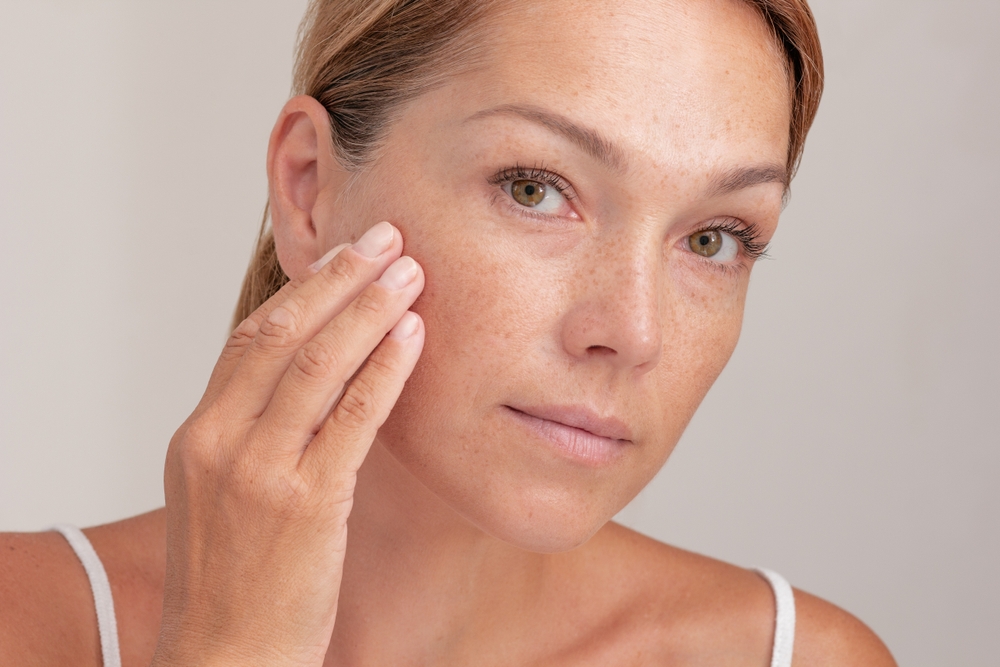What Are the Most Effective Treatments for Age Spots?
June 10, 2024
Hands can give away a person's age more easily than you might think, even if the rest of their appearance seems young. After years of sun exposure, the back of the hand is one of the first places people begin to develop age spots.
However, age spots can also commonly appear on the face, especially in areas frequently exposed to the sun like the cheeks and forehead. Keep reading to learn what the most effective treatments for age spots are!
What are Age Spots? 
Age spots, also known as sunspots, liver spots, and solar lentigines, are small, flat spots that appear on areas of the skin most often exposed to ultraviolet radiation (UV) from the sun, including the face, neck, hands, and chest. They are usually tan to dark brown in color.
Age spots are caused by an accumulation of melanin, the pigment that gives skin its color. Exposing the skin to the sun accelerates the production of melanin, leading to the formation of age spots.
Despite their most commonly known name, age spots can develop at any age, but are more common in older adults due to cumulative exposure to the sun over time. Age spots are usually harmless unless they change in size, shape, or color, which could indicate a more serious skin condition.
What Causes Age Spots?
While age spots are primarily caused by prolonged exposure to UV radiation from the sun, several additional factors can contribute to the development of age spots. These factors include:
Aging
As you age, your skin experiences a decrease in cell turnover and repair. This can result in the accumulation or overproduction of melanin and lead to the formation of age spot clusters.
Genetics
Your genetics can contribute to the appearance of age spots. Individuals who have very light skin or who are prone to sunburn may be more genetically predisposed to developing age spots.
Hormonal Changes
Hormonal changes, such as those that occur during pregnancy or when undergoing hormonal therapy, can lead to increased melanin production and result in hyperpigmented spots, a complication called melasma. The spots caused by melasma usually disappear after pregnancy or ending hormonal therapy, but can return with sun exposure.
Medications
Medications, including nonsteroidal anti-inflammatory drugs (NSAIDs), certain antibiotics, and some chemotherapy drugs, can make the skin more sensitive to sunlight, increasing the risk of age spots.
Artificial UV Exposure
Sources of artificial UV light, like tanning beds and lamps, emit the same UV radiation as the sun. Overexposure to artificial UV light is as likely to result in age spots as overexposure to natural sunlight.
What are the Most Effective Treatments for Age Spots?
While complete removal of age spots is not always possible, there are treatment options that can reduce their appearance. Here are some of the most effective treatments:
Topical Treatments
Topical prescription or over-the-counter treatments containing these potent ingredients can diminish age spots:
- Hydroquinone: Hydroquinone is a skin-lightening agent that inhibits melanin production.
- Retinoids: Retinoids are vitamin A derivatives that can help fade age spots by promoting cell turnover and exfoliating pigmented skin cells.
- Vitamin C: Creams or serums containing vitamin C can help brighten the skin and reduce the appearance of age spots.
- Alpha Hydroxy Acids (AHAs) and Beta Hydroxy Acids (BHAs): AHAs and BHAs are exfoliating acids that can help lighten age spots over time by removing dead skin cells.
 Chemical Peels
Chemical Peels
Chemical peels that use glycolic acid or trichloroacetic acid (TCA) can exfoliate the skin and fade age spots. For optimal results, multiple sessions may be required, and they should always be administered by an experienced professional.
Laser Treatments
Laser treatments, like Lumecca, use intense pulsed light (IPL) therapy to target and break down the melanin in age spots, leading to their gradual fading. The advanced IPL technology used by Lumecca requires fewer treatments and delivers faster results than other laser treatments.
Cryotherapy
Cryotherapy works by freezing age spots with liquid nitrogen, causing them to blister and eventually slough off. Cryotherapy should be performed by a licensed dermatologist.
Microdermabrasion
Microdermabrasion is a non-invasive procedure that uses an applicator with an abrasive surface to gently sand away the skin's outer layer. Like chemical peels, it usually takes more than one treatment to see results and is not recommended for darker skin tones.
Can You Prevent Age Spots?
While it is generally not possible to completely prevent age spots, there are steps you can take to protect your skin from developing them. Two of the best steps are:
 Sun Protection
Sun Protection
You should limit your skin's exposure to UV light by wearing a broad-spectrum sunscreen of at least 30 SPF daily, even on cloudy days or during the winter. Make sure you reapply sunscreen every two hours or more frequently if swimming or sweating a lot.
When outdoors, seek shade between 10 a.m. and 4 p.m., when UV rays are strongest, and cover exposed skin with clothing, hats, and sunglasses to shield against UV light.
Healthy Lifestyle Choices
Making healthy lifestyle choices can prevent the appearance of age spots. Some healthy choices include not smoking (or quitting if you smoke), eating a diet rich in nutrients that support overall skin health, and avoiding tanning beds. Studies have shown that indoor tanning beds are one of the biggest contributors to premature aging. They have also been linked to higher-than-average incidences of potentially fatal skin cancers.
With effective treatments, you don't have to let age spots give your true age away! Chemical peels, microdermabrasion, and Lumecca can diminish the appearance of age spots and make you feel young again!
Do you want to learn more about treating age spots? Schedule an appointment at Advanced Eye Care & Aesthetics in Bel Air, MD, today!



